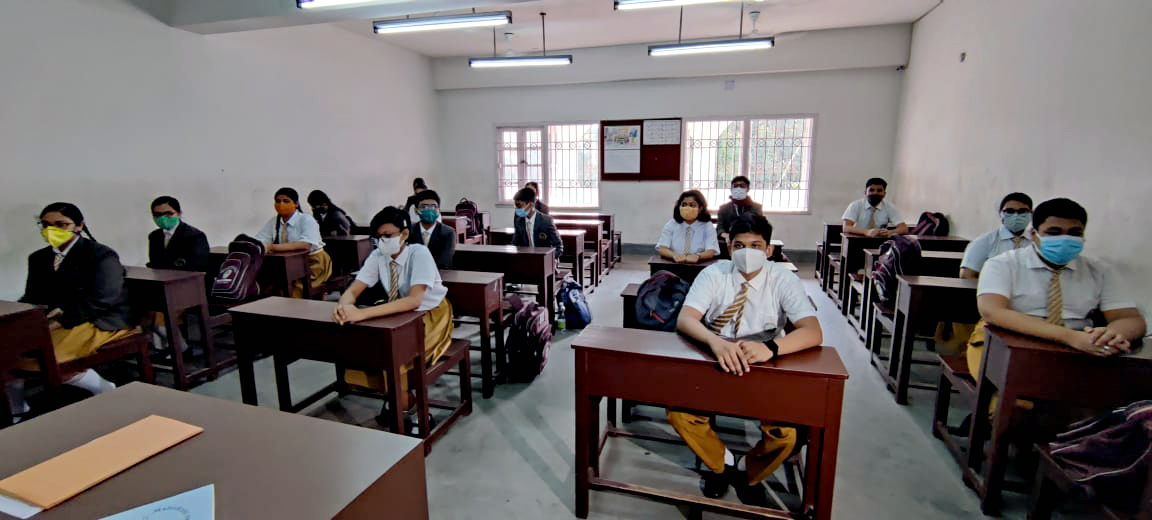‘While smartphone ownership has risen dramatically, children’s access to it has often been limited’.
New Delhi: There has been a big jump in enrollment in government schools, accompanied by a fall in enrollment in private schools. The increase in government school enrollment is across the board, within all age-groups, grades and for both boys and girls, a flagship nationwide survey said on Wednesday.
The Annual Status of Education Research (ASER) has also found that while smartphone ownership has risen dramatically, children’s access to it has often been limited. Almost a third of all children in Std. I and II did not have a smartphone available at home and very few had some form of contact with teachers to discuss children’s learning (28.5%). The research also noted that the families which had contact with teachers were heavily skewed towards better off families.
The ASER survey that reports on children’s schooling and learning status across rural India has been issued by the non-profit organisation Pratham. The survey in its 16th edition (2021) reached 581 districts in 25 states and 3 Union Territories. The survey covered 76,706 households and 7,299 schools in 17,184 villages across India and aims to understand the ground realities and capture the impact of reopening of schools during the pandemic.
Between 2006 to 2014, private school enrollment had increased steadily, but a drastic drop was found in enrollment from 2018 (32.5%) to 2020 (28.8%) and 24.4% in 2021. At the same time, public school enrollment rose from 64.3% in 2018 to 65.8% in 2020 and 70.3% in 2021.”Government school enrollment has jumped significantly in 2021. Many affordable smaller private schools have shut down during the pandemic (UNICEF 2021),” the report reads.
The survey found out the proportion of 15-16-year-olds who dropped out of school in 2010 was 16.1% and with government’s push later on to universalise the secondary education, the dropout percentage has declined to 12.1% in 2018. The decline had further continued in 2020 to 9.9% and to 6.6% in 2021—making secondary school dropouts lesser in number and strengthening the education at the crucial stage.
The survey also reported the incidence of tuition having increased across almost all states—which perhaps is the natural response to continued closure of schools. “It is curious that while economic disruptions may have moved children out of private schools (in fact, in many cases the pandemic destroyed the economy of low cost private schools), parents were still able to access tuition classes where they had to pay fees. This may be due to the fact that tuition classes are a local phenomenon where payment may adjust flexibly and quickly based on demand and supply negotiated between the tutor and the family.”
The report added, “The proportion of children taking tuition has increased from 2018 to 2021, regardless of grade, school type, or sex. Currently, almost 40% children take paid private tuition classes.”
“The largest increases in the proportion of children taking tuition are seen among children from the most disadvantaged households. Taking parental education as a proxy for economic status, between 2018 and 2021, the proportion of children with parents in the ‘low’ education category who are taking tuition increased by 12.6 percentage points, as opposed to a 7.2 percentage point increase among children with parents in the ‘high’ education category,” the report reads.
Data from the ASER 2021 school survey has confirmed that 70% of (teachers and headmasters) have said that the enrollment in their schools has increased. The several causes given by the teachers and headmasters for the increase in government enrollment have been recorded—40% have reasoned that no studies were going on in private schools, 15% of them have attributed to migration being the cause, 62% have said due to the financial distress, and about 50% have stated the increase in free facilities of the government schools.
The report also speculates that the entire possibility of the increase in government school enrollment to get reversed in the future “as incomes recover and private schooling becomes profitable again”.
The report stated that with schools being closed for over a year in US (62 weeks) and India (73 weeks) (data as of 30 September 2021), “There was no doubt that the pandemic was going to impact learning adversely—children’s learning levels suffer even after regular, scheduled summer vacations. However, with the pandemic affecting livelihoods, especially of low-income, casual and migrant workers, there was an additional fear that family budgets getting squeezed would also lead to an increase in drop-outs, especially among older children and girls.” However, the report has also produced a positive note that the families of the youngest children have demonstrated their willingness and ability to support their children’s education, once the schools begin to open

